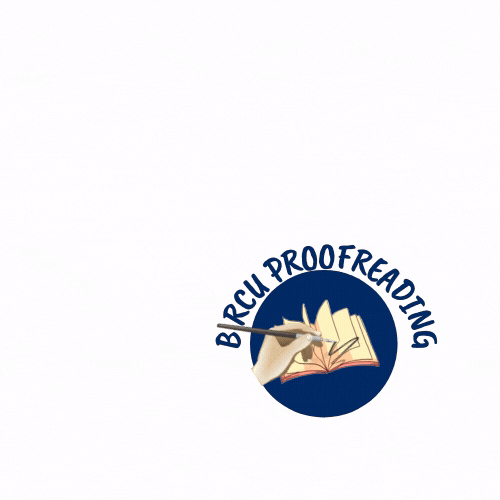Assessment of the Larvicidal Efficacy of the Hexane-Leaf-Extracts of Selected Tropical Plant Species
Abstract
Keywords
Full Text:
PDFReferences
Acheampong, A., Amankwaa, L. T., Afriyie, I. O. and Baah, K. A. (2018). Antioxidant and Antimicrobial Activity of the Methanol and Petroleum Ether Extracts of the Stem of Microdesmis puberula. The Pharmaceutical and Chemical Journal, 5(1), 38 – 48.
Agboola, I. O., Ajayi, G. O., Adesegun, S. A, Adesanya, S. A (2011). Comparative Molluscicidal activity of fruit pericarp, leaves, seed and stem Bark of Blighia unijugata Baker. Pharmacol. J., 3:63 - 66.
Akpanyung, E. O., Ita, S. O., Opara, K. A., Davies, K. G., Ndem, J. I., and Uwah, A. F. (2013). Phytochemical screening and effect of ethanol root extract of Microdesmis puberula on some haematological and biochemical parameters in normal male albino Wistar rats. Journal of Medicinal Plants Research, 7(31), 2338 - 2342.
Angaye T. C. N., Ohimain, E. I., Siasia, E. P., Asaigbe, P. I., Finomo, O. A. (2014b). Larvicidal activities of the leaves of Niger Delta mangrove plants against Anopheles gambiae. SkyJournal of Microbiology Research, 2(7), 032 - 036.
Angaye TCN. (2015). In-vitro comparative molluscicidal activities of aqueous and methanolic extracts of Jatropha curcas leaves against Bulinus globosus and Bulinus rholfsi; vectors of urinary schistosomiasis. M.Sc. thesis, Niger Delta University, Wilberforce Island, Bayelsa State, Nigeria.
Angaye, T. C. N., Ohimain, E. I., Zige, D.V., Didi, B., and Biobelemoye, N. (2014a). Biocidal activities of Solvent extracts of Azadirachta indica against Some Endemic Tropical Vectorborne Diseases. International Journal of Tropical Disease & Health, 4(11), 1198 - 1208.
Angaye, T. C. N., Oyinke, G., Angaye, W.T., Igbeinkutu, V. D. (2017b). The Comparative Phytochemical and Bio-larvicidal Efficacy of Leaf Extracts of Gmelina arborea against Mosquito Larvae. International Journal of Innovative Healthcare Research, 5(1), 1-6.
Angaye, T. C. N., Oyinke, G., Angaye, W.T., Orubina, I. A. (2017a). Control of Malaria and Schistosomiasis Vectors Using Express Seed Sap Extracts of Gmelina arborea. Asio Journal of Medical and Health Science Research 2(1): 1 - 10.
Azoro, C. (2000). Antibacterial activity of crude extract of Azadirachita indica on Salmonella typhi. World Journal of Biotechnology, 3, 347-351.
Cheeke, P. (1998). Natural toxicants in feeds, forages, and poisonous plants. Danville, IL: Interstate. curcin, a ribosome-inactivating protein from the seeds of Jatropha curcas. Acta Bot. Sin, 45, 858 – 863.
Devappa, R. K., Makkar, H. P. S., and Klaus, B. (2010). Jatropha Toxicity-A Review. Journal of Toxicology and Environmental Health, 13(6 Pt B): 476-507.
Dibua, Uju Marie-Esther, Odo, Greg Ejikeme, Nwabor, Ozioma Forstinus, Ngwu, Goddy Ikechukwu (2013). Larvicidal activity of Picralima nitida, an environmental approach in malaria vector control. American Journal of Research Communication, 1(12), 451-469.
Eboh, A. S., Ere, D., Frank-Oputu, A. (2017). Total Phenol, Flavonoid, Tannins, Vitamin C and Spectral Analysis of Ethanolic Extract of Spilanthes filicaulis. The Saudi Journal of Life Sciences, 2(9), 331 - 334.
Eliakim-Ikechukwu, C. F., Edem, A. A., William, U. M., Okori, S. O., and Ihentuge, C.J. (2013). Phytochemical Composition of Cassia alata Leaf and its effects on Histology of Pancreas in Diabetic wistar Rats. ISOR Journal of Pharmacy and Biological Sciences, 5(5), 7 - 13.
Fonkeng, L. S., Mouokeu, R. S., Tume, C., Njateng, G. S. S., Kamcthueng, M. O., Ndonkou, N. J., and Kuiate, J. R. (2015). Anti‑Staphylococcus aureus activity of methanol extracts of 12 plants used in Cameroonian folk medicine. BMC Res Notes, 8(710), 1 – 6.
Gbadamosi, I. T., and Oloyede, A. A. (2014). The proximate and phytochemical Contents of Ten Nigerian Medicinal Plants used in the management of Arthritis. African Journal of Pharmacy and Pharmacology, 8(23), 638 – 643.
Ghosh A., Chowdhury N., Chandra G. (2012). Review on plant extracts as potential mosquito larvicides. Indian J Med Res., 135: 581 - 598.
Ilondu E. M., Ojeifo I. M., and Emosairue, S. O. (2014). Evaluation of antifungal properties of ageratum conyzoides, Spilanthes filicaulis and tithonia diversifolia leaf extracts and search for their compounds using gas Chromatography - Mass spectrum. Journal of Agricultural and Biological Science, 9(11), 375 – 384.
Ohimain E. I, Angaye T. C. N., and Bassey, S. E. (2014). Comparative larvicidal activities of the leaves, bark, stem and root of Jatropha curcas (Euphorbiaceae) against malaria vector Anopheles gambiae. Sky Journal of Biochemistry Research, 3(3), 029 – 032.
Ohimain, E. I., Angaye, T. C. N., and Bamidele, J. F. (2015). Larvicidal Activities of Hyptis suaveolens and Ocimum sanctum against Anopheles gambiae. Journal of Applied Life Sciences International, 3(3), 131-137.
Okooboh, A. M., and Gambo, N. N. (2013). Phytochemistry and Antimicrobial Activity of the Leaf of Cassia alata LINN. Chemistry and Materials Research, 3(3), 96 – 102.
Okumu F. O, Knols B. G. J., Fillinger U (2007). Larvicidal effects of a neem (Azadirachta indica) oil formulation on the malaria vector Anopheles gambiae. Malaria Journal, 6:63.
Owoeye J. A., Akawa O. B., Akinneye J. O., Oladipupo S. O., and Akomolede, O. E. (2016). Toxicity of Three Tropical Plants to Mosquito Larvae, Pupae and Adults, Journal of Mosquito Research, 6(16), 1 - 7.
Rai, M. K., Varma, A. and Pandey, A. K. (2004). Antifungal potential of Spilanthes calva after inoculation of Piriformospora indica. Mycoses, 47, 479 - 481.
Raji, P., Sreenidhi, J., Sugithra, and Renugaddevi, K. (2015). Phytochemical Screening and bioactivity Study of Cassia alata Leaves. Biosciences Biotechnology in Asia, 12(2), 291 – 296.
Sakthivadivel, M., Gunasekaran, P., Sivakumar, M., Arivoli, S., Raveen, R. and Tennyson, S. (2015). Mosquito larvicidal activity of Hyptis suaveolens (L.) Poit (Lamiaceae) aerial extracts against the filarial vector Culex quinquefasciatusSay (Diptera: Culicidae). Journal of Medicinal Plants Studies, 3, 4.
Ugbogu, A. E., Okezie, E. I., Uche-Ikonne C., Duru M., and Atasie O. C. (2016). Toxicity Evaluation of the Aqueous Stem Extracts of Senna alata in Wistar Rats. American Journal of Biomedical Research, 4(4), 80 - 86.
Wahab, O. M., Ajala, O. O., Ojo, M. O., and Egunjobi A. J. (2013). Ethnomedicinal and Phytochemical profile of Spilanthes filicaulis (Schum & Thonn) CD Adams (Astaraceae) in Ibadan metropolis. Heal. Herbs Pract Technol., 2, 13 - 18.
DOI: https://doi.org/10.33258/birex.v2i2.870
Article Metrics
Abstract view : 1096 timesPDF - 178 times
Refbacks
- There are currently no refbacks.

This work is licensed under a Creative Commons Attribution-ShareAlike 4.0 International License.

This work is licensed under a Creative Commons Attribution-ShareAlike 4.0 International License.

_.gif)
















_.gif)


